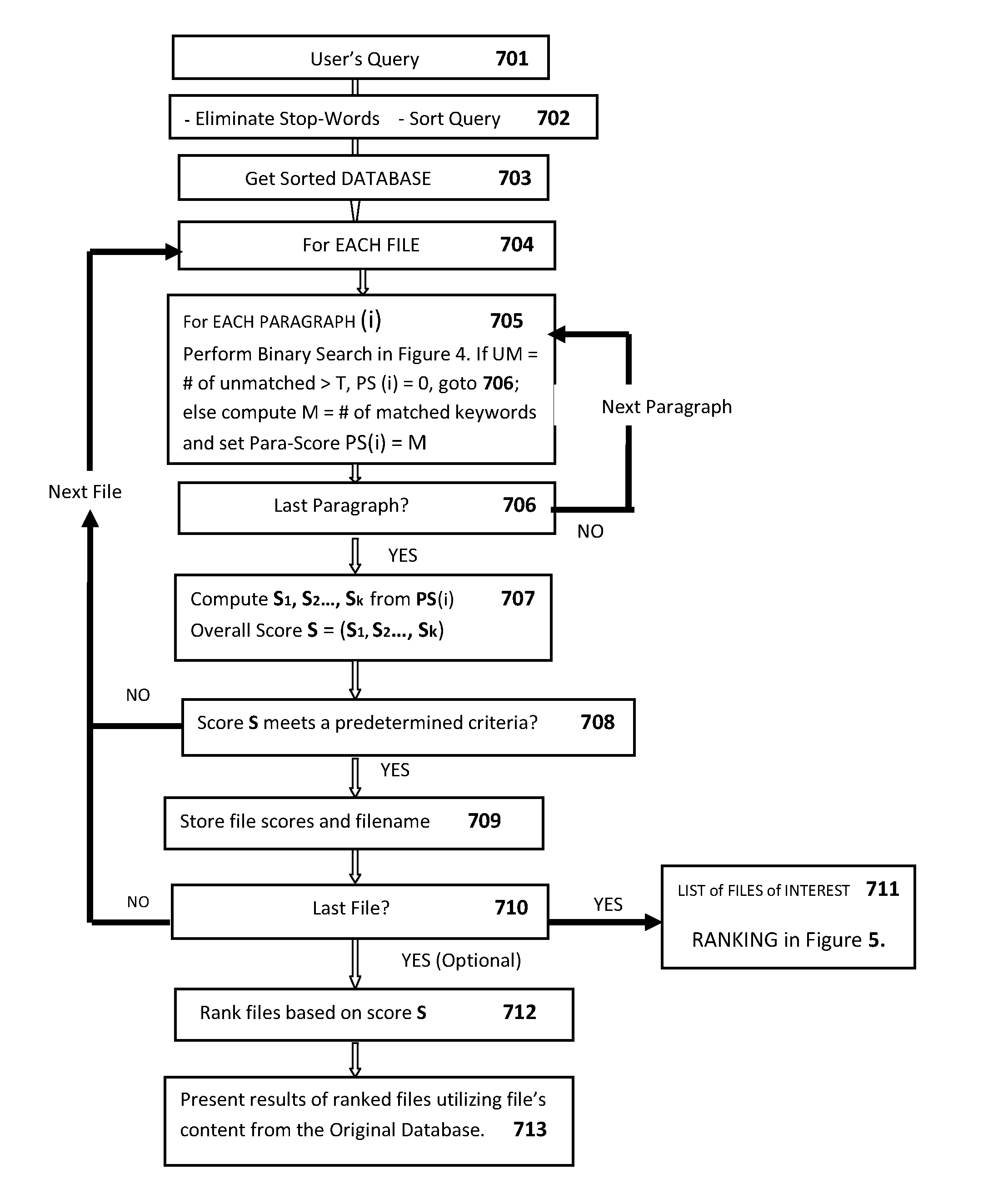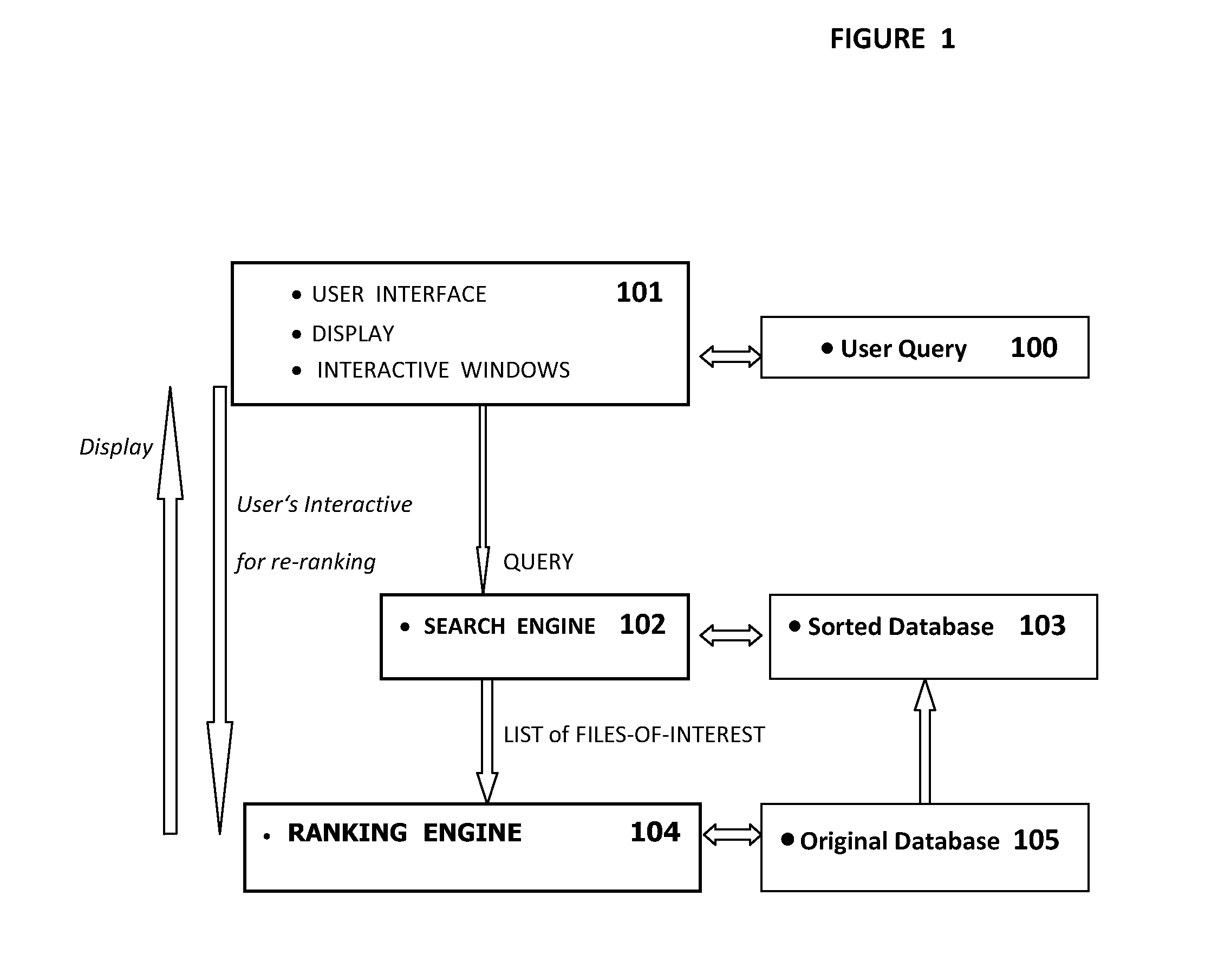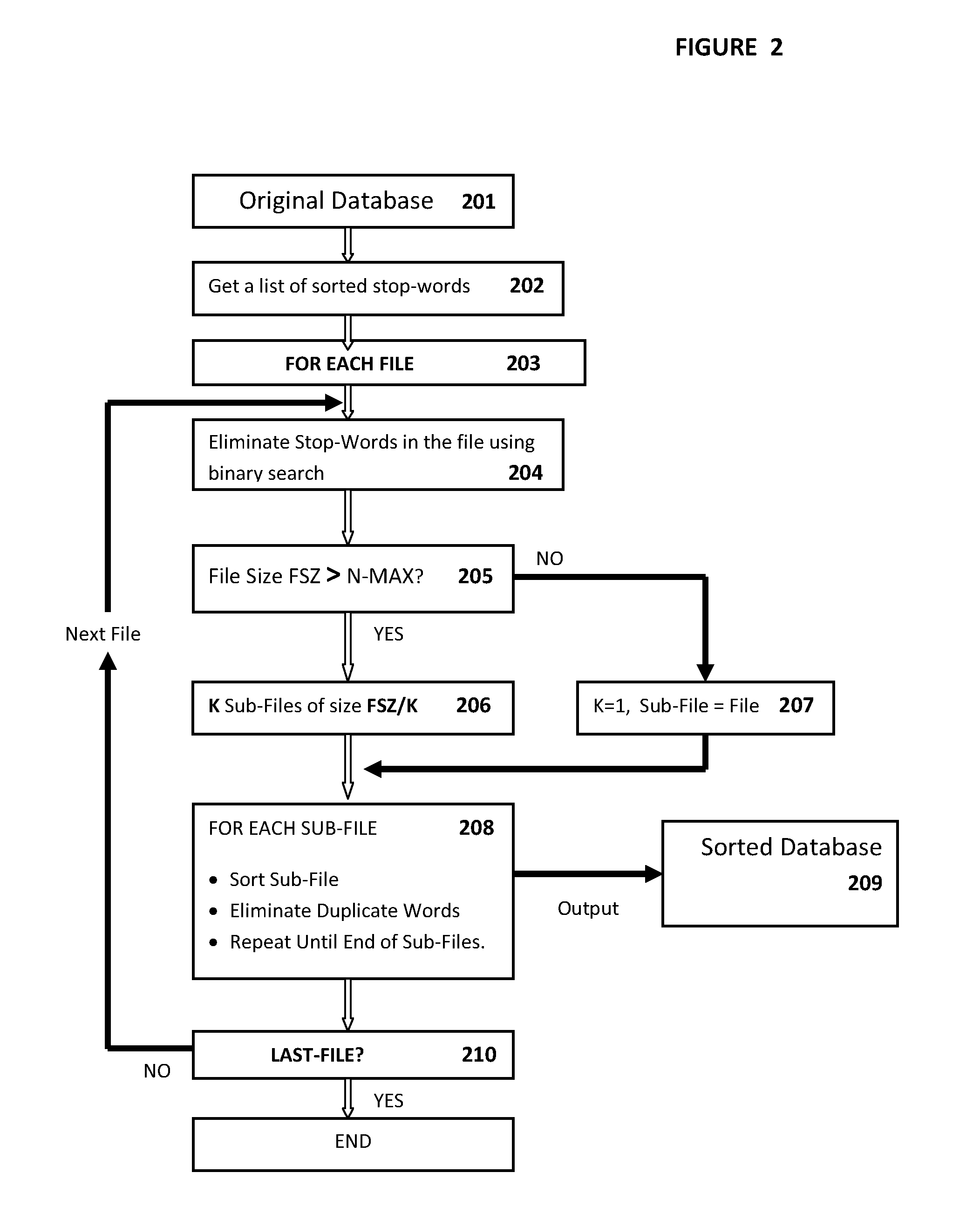Apparatus and method for information access, search, rank and retrieval
a technology of information access and apparatus, applied in the field of apparatus and method for information access, search, rank and retrieval, can solve the problem that binary searching is not applicable to normal documents, and achieve the effect of quick binary searching and improving ranking performan
- Summary
- Abstract
- Description
- Claims
- Application Information
AI Technical Summary
Benefits of technology
Problems solved by technology
Method used
Image
Examples
first embodiment
for Sorting a Database
[0075]FIG. 2 is a flowchart illustrating a process of creating a sorted database from an original database according to the first embodiment.
[0076]In FIG. 2, the process starts with,
[0077]Step 201: receiving an original database comprising a plurality of files;
[0078]Step 202: receiving a list of sorted stop words, where stop words are words that appear frequently in a document without provide much useful information on the subject matter of the document. By way of an example, “a”, “an”, “the”, “it”, “of”, “is”, “are”, “in”, “to”, “for”, “that” or the likes are stop words. Note here that the list of stop words is sorted so that a binary search can be made on the list.
[0079]Step 203: for each file,
[0080]eliminating stop words using binary search (step 204);
[0081]Check if file size FSZ is larger than a predetermined size NMAX (step 205),
[0082]If yes (step 206), determine K=integer (FSZ / NMAX)+1, dividing the file into K sub-files, where each sub-file size=FSZ / K.
[00...
second embodiment
for Sorting a Database
[0108]Since the scoring of a file is relied on matched keywords and substantially relied on matched keywords within a paragraph, a second embodiment is proposed where each paragraph, rather than files or sub-files in the first embodiment, is sorted.
[0109]FIG. 6 is a flowchart illustrating a process of creating a sorted database from an original database according to the second embodiment.
[0110]In FIG. 6, the process of eliminating stop words and duplicate words for each paragraph is similar to the process of eliminating stop words and duplicate words for each sub-file in FIG. 2. However, in FIG. 6, if the current paragraph size is less than a predetermined number NMIN, next paragraphs are merged into the current paragraph until its size is larger than NMIN. The merging process is made to avoid process a paragraph with too few words (e.g, less than 5).
[0111]FIG. 7 is a flowchart illustrating a process of eliminating unrelated files and retaining files-of-interes...
PUM
 Login to View More
Login to View More Abstract
Description
Claims
Application Information
 Login to View More
Login to View More - R&D
- Intellectual Property
- Life Sciences
- Materials
- Tech Scout
- Unparalleled Data Quality
- Higher Quality Content
- 60% Fewer Hallucinations
Browse by: Latest US Patents, China's latest patents, Technical Efficacy Thesaurus, Application Domain, Technology Topic, Popular Technical Reports.
© 2025 PatSnap. All rights reserved.Legal|Privacy policy|Modern Slavery Act Transparency Statement|Sitemap|About US| Contact US: help@patsnap.com



